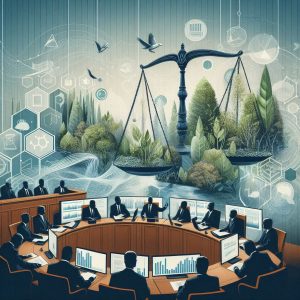Mastering both law and science is pivotal for attorneys facing the intricate challenges of environmental lawsuits.
These practitioners employ inventive approaches to champion the rights of impacted communities.

Whether addressing pollution at military installations or managing industrial spill fallout, they skillfully manage evidence gathering and courtroom representation.
Delve into their techniques for harnessing scientific data and forging persuasive narratives that strike a chord with judges and juries.
Amid escalating environmental issues worldwide, their expertise proves vital in bringing culprits of ecological harm to justice.
Building a Strong Case: Legal Fundamentals in Environmental Lawsuits
Legal practitioners need to grasp key fundamentals when constructing robust environmental lawsuits.
A deep understanding of statutory and case law forms the backbone of these cases, guiding lawyers as they assemble evidence and craft compelling narratives.
Meticulous documentation is crucial.
From eyewitness accounts to government reports, every piece contributes to creating a comprehensive picture.
Attorneys often work alongside environmental experts who provide scientific analyses essential for courtroom success.
Understanding jurisdictional challenges also plays a role in where and how cases proceed.
With careful attention to procedural rules, lawyers ensure that their claims stand up under scrutiny.
By mastering these fundamentals, legal professionals set the stage for effective advocacy against polluters, safeguarding communities affected by ecological harm.
Challenges Faced by Legal Practitioners in PFAS Cases
Legal professionals handling PFAS cases encounter numerous challenges.
One significant hurdle involves demonstrating the link between exposure and health effects.
Scientific evidence, though abundant, often requires interpretation and clear presentation to resonate with judges.
A practical example of this is legal support for AFFF exposure at military bases.
Military personnel have faced contamination from firefighting foam used extensively over decades.
Lawyers must gather compelling evidence that ties chemical use to groundwater pollution.
Another challenge is navigating jurisdictional complexities when dealing with government entities or multinational corporations responsible for contamination.
Attorneys need adept strategies to address these issues head-on while advocating effectively for impacted communities.
Through perseverance and strategic thinking, they seek justice against formidable adversaries on behalf of those harmed by environmental negligence.
Navigating Scientific Data in Courtrooms
Successfully presenting scientific data in environmental lawsuits requires clarity and precision.
Legal practitioners must bridge the gap between complex science and legal standards to ensure a judge or jury understands the implications.
- Collaboration with Experts: Lawyers often team up with scientists who provide credible interpretations of data, translating technical jargon into straightforward language.
- Simplifying Complexity with Charts: By translating complex data into visual formats like charts, lawyers make it significantly easier for those without expertise to understand key points in the courtroom.
- Mastery of Cross-Examination: Through precise and methodical questioning, attorneys pinpoint and illuminate any frailties or contradictions in the opposition’s expert witness accounts.
By effectively managing these elements, lawyers enhance their case presentation.
They help ensure that environmental concerns receive the attention they deserve within legal settings.
Expert Witness Impact on Environmental Litigation
In the realm of environmental lawsuits, expert witnesses infuse scientific credibility into legal debates.
They break down technical details, making complex data accessible and persuasive for judges and juries.
These experts often conduct independent research or validate existing studies related to the case.
Their testimony can be pivotal, providing insights into causation and potential health impacts from environmental hazards.
This input helps clarify connections between defendants’ actions and ecological damage.
Furthermore, expert witnesses bolster credibility by reinforcing key points through an objective lens.
Lawyers rely on these specialists to strengthen narratives around contamination events like industrial spills or chemical leaks.
In collaboration with legal teams, they illuminate the science behind allegations while advocating for affected communities seeking redress.
Bridging Law and Science for a Sustainable Future
As legal practitioners advance in environmental lawsuits, the partnership between law and science grows stronger.
Together, they create a foundation for sustainable change by ensuring accountability and advocating for cleaner practices.
This collaboration helps safeguard natural resources while setting precedents that guide future actions toward environmental responsibility, aiming for a healthier planet.


Leave a Reply